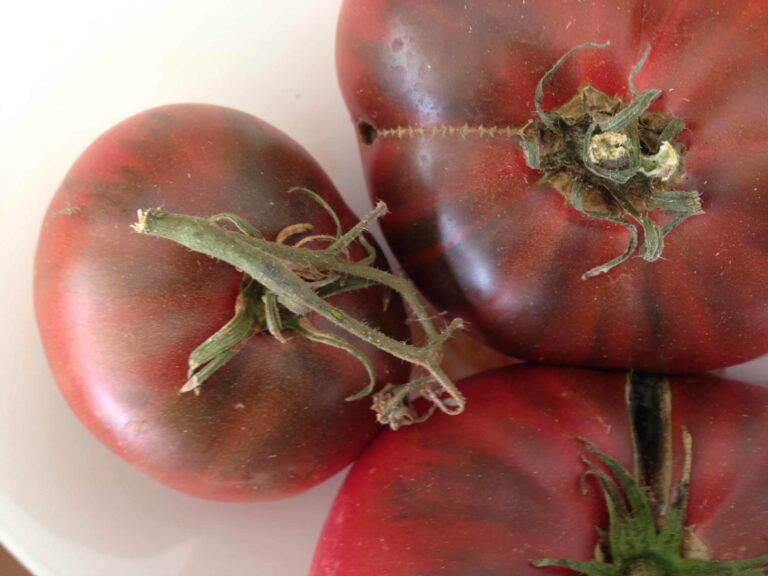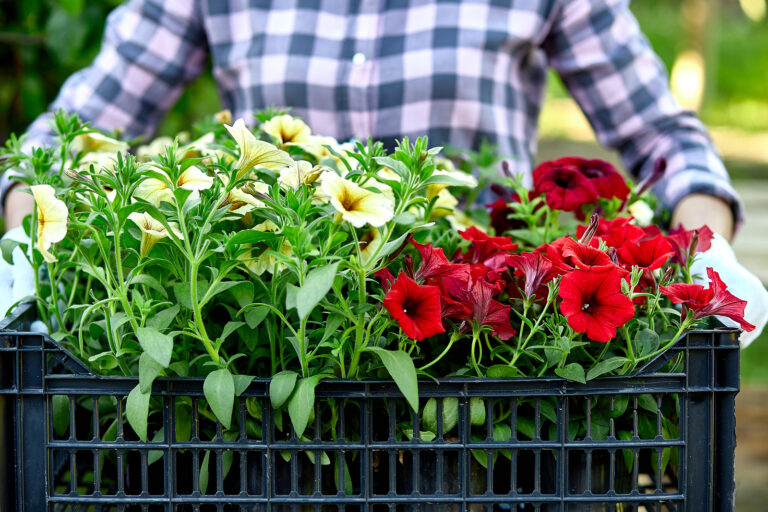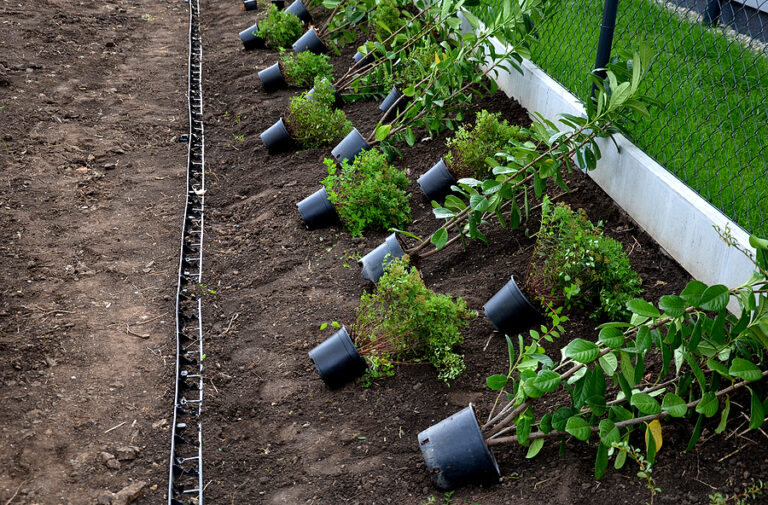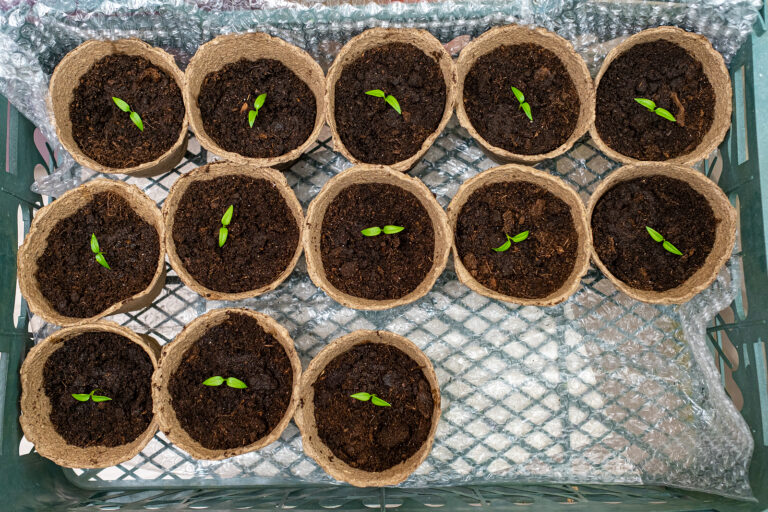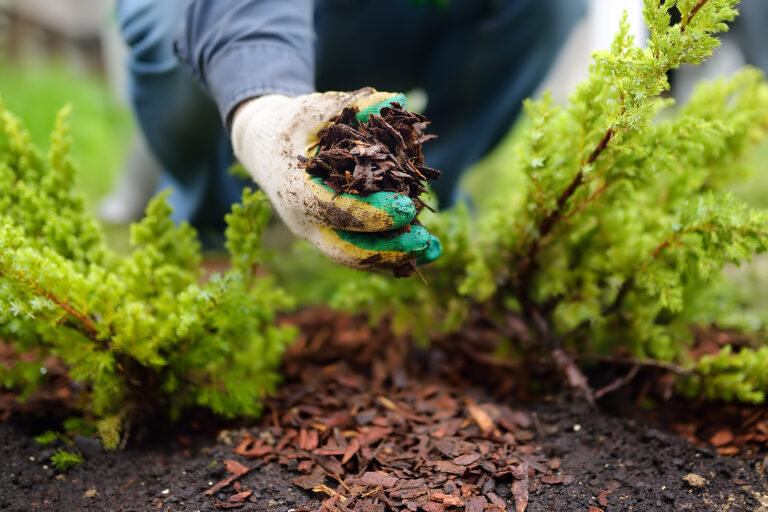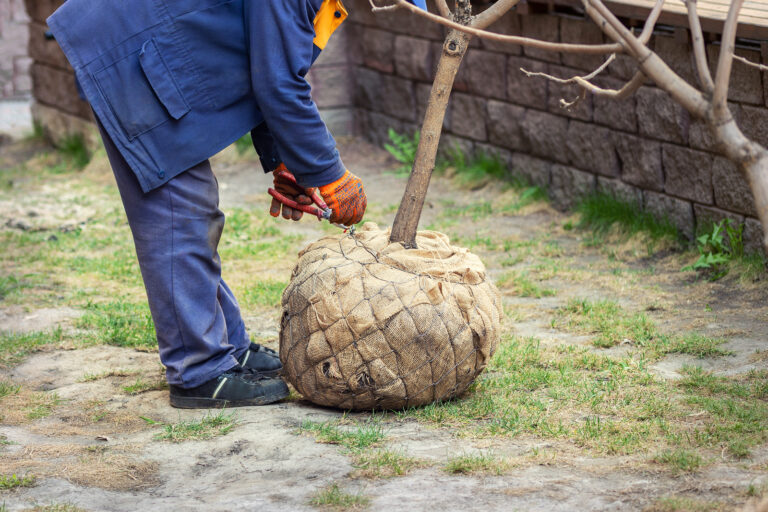October Flower Garden Tips Zone-by-Zone
Here is a zone-by-zone to-do list for your October flower garden. You’ll find planting and garden care tips for tree and shrubs, perennials, annuals, bulbs, the lawn, and houseplants.
Use the USDA Hardiness Zone Map to check your zone if you are unsure. Now is the time to get the garden ready for the coming winter.
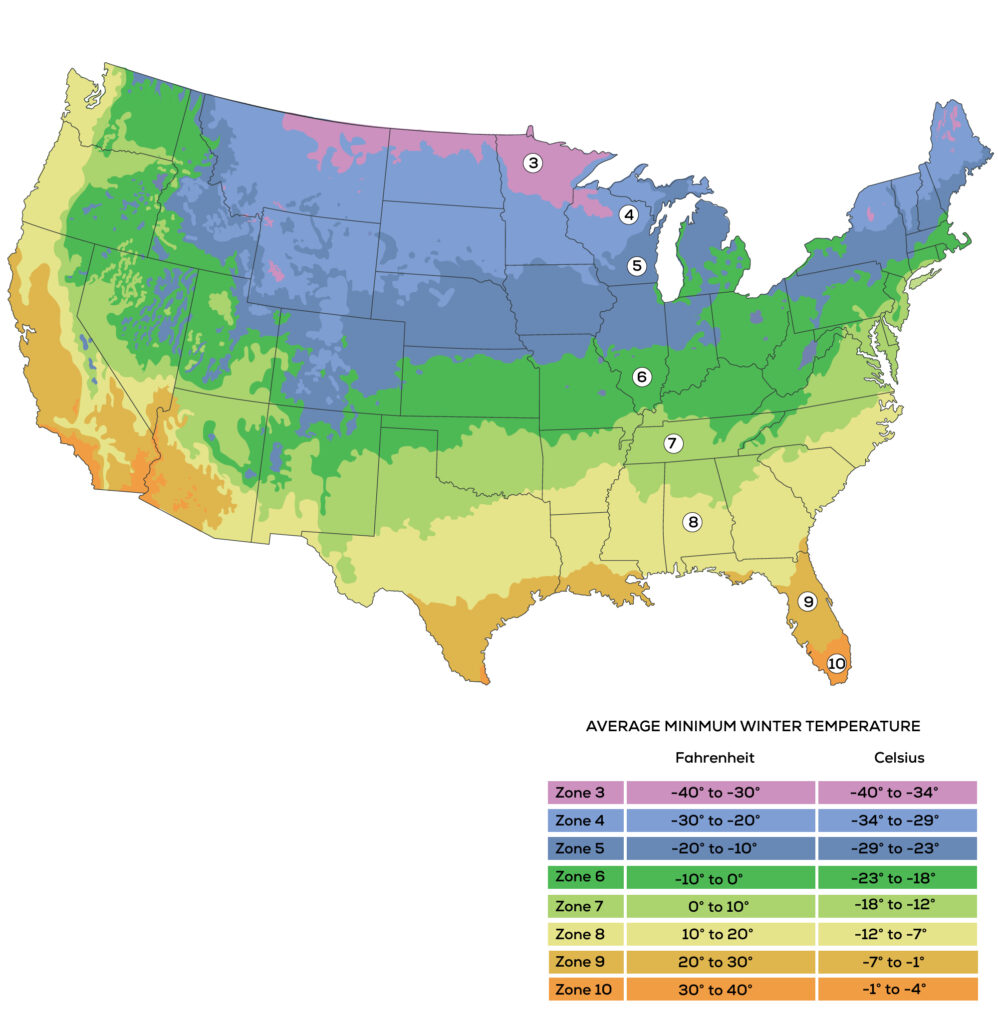
Trees & shrubs
Zones 9-11: Plant evergreens; plant deciduous trees, shrubs, and vines when leaves have fallen. Plant azaleas now. Fertilize evergreens, trees, and shrubs that bloom in spring. To change the color of hydrangeas from blue to pink, add a single handful of hydrated lime to the soil around each plant now and work it into the soil. If the flowers are pink and you want to make them blue, add sulfur, aluminum sulfate, or iron filings to the soil. Water new plants regularly and established plantings deeply in dry weather. Stake new trees. Prune climbers and fasten them securely to their supports. Rake up healthy leaves and shred them to make compost. Watch for pests and signs of disease.
Zones 1-7: Plant evergreens; plant deciduous trees and shrubs when leaves have fallen. Leave supersensitive ones, like magnolias, white oak, and sour gum, for spring moving. Water new plantings and established evergreens weekly in dry weather. Take hardwood cuttings of shrubs after leaves drop to root in the greenhouse or frame. Prune climbers and fasten them securely to their supports. Trim vines, especially those on the house, so they won’t be too cumbersome when snow and ice form. Heavy vines on waterspouts may cause damage. Stake young trees to prevent winter wind damage. Mulch rhododendrons and other broad-leaved evergreen shrubs. Wrap exposed evergreen shrubs in straw or build burlap windbreaks with wooden frames. Install mouse guards around trunks of young trees. Rake up healthy leaves to make compost. When soil freezes, mulch new plantings to prevent frost heaving.
Roses
Zones 7-11: Water roses as necessary during dry weather. Prune dead or damaged growth. Prune climbers and ramblers and fasten them firmly to their supports. Clean up dropped leaves around roses; dispose of any diseased leaves. Watch for pests and signs of disease.
Zones 1-6: Plant roses. Water all roses regularly until the ground freezes. Remove seed pods of hybrid teas since the development of seeds competes for food that should be stored to increase cold resistance during winter. Prune shrubs roses when they go dormant. Detach canes of ramblers and climbers; gently lay them on the ground and cover them with evergreen boughs or thick mulch. Clean up the rose garden; dispose of any diseased leaves. Hill up the soil to at least 6 inches (15cm) around hybrid teas just before the first hard freeze. When ground freezes, mulch deeply.
Lawns & ground covers
Zones 7-11: Plant groundcovers and ornamental grasses. Water new plantings regularly if the weather is dry. Fertilize established lawns or top-dress them with compost. Mow the lawn when necessary. Divide crowded clumps of ornamental grasses. Zones 8-11: Overseed summer lawns with ryegrass; sow cool-weather lawns; reseed thin or bare spots.
Zones 1-6: Water newly planted ground covers and ornamental grasses regularly until the ground freezes. Edge and mow the lawn if needed; dig out dandelions and other weeds.
Perennials
Zones 7-11: Plant new perennials; divide and transplant crowded clumps of spring-blooming perennials. Feed chrysanthemums with a dilute solution of fish emulsion. Water new plants regularly, established plants as needed. Cut back perennials to 2 to 3 inches (5-7cm) when they finish blooming or earlier when top-growth starts to die back. Cut back mums when they finish blooming. Collect seeds for replanting next spring. Divide daylilies, violets, Shasta daisies, and replant them now. Protect perennials that are not reliably hardy. Weed and clean up debris from beds and borders.
Zones 1-6: Cut back perennials to 3 to 4 inches (7-10cm). Cut back mums when they finish blooming. Protect perennials that are not reliably hardy; lift and bring them indoors. Take cuttings of doubtfully hardy perennials such as penstemon, dianthus, Salvia farinacaea; these will root readily from cuttings. Collect seeds from annuals and perennials for planting next spring. Water during dry weather, ease off when plants begin to go dormant, stop when the ground freezes. Weed and clean up plant debris from beds and borders. Mulch perennials thickly when the ground is frozen.
Bulbs
Zones 8-11: Plant early spring-blooming bulbs. Plant brodiaea, hyacinth, iris (Dutch, Japanese, Siberian, Spanish, and ochroleuca), daylily, gold band lily, tiger lily, montbretia, narcissi, scilla, snowdrops, and tulip. In zones 10-11, also plant amaryllis, freesia, and gladiolus. Fertilize bulbs at planting. Dig summer bulbs when they finish blooming—caladiums, gladioli, dahlias. Refrigerate tulips and hyacinths for planting in six weeks.
Zones 1-7: Start planting hardy spring-flowering bulbs as soon as they are available. Get narcissus, muscari, snowdrops, scillas, crocus, and other small bulbs in as soon as possible. Hyacinths, tulips, and Dutch irises are best planted late in the month or early next month before the ground freezes. Dig summer bulbs when they finish blooming to store indoors over winter—caladiums, gladioli, dahlias. Let them dry off for a day, then store them where it is cool and fairly dry—but don’t let them dry out so much that they shrivel. Pot up daffodils, tulips, and crocuses for forcing indoors. Plant them in rich, loose soil in bulb-pans and set them in a protected cold frame until they have made strong roots. In about 6 to 8 weeks they will be ready to bring into the house to start growth.
Annuals
Zones 7-11: Direct sow or transplant hardy annuals. Sow seed of sweet alyssum, African daisy, calendula, California poppy, cornflower, larkspur, Drummond phlox, snapdragon, stocks, sweet peas, and verbena. Feed new plants with a water-soluble fertilizer. Continue to weed, water, deadhead, fertilize plants still in bloom. Take cuttings of coleus, geraniums, and other annuals to pot up for winter houseplants. Pull up annuals when plants fatigue. Clean up empty areas in beds and borders.
Zones 1-6: Pull annuals when plants stop blooming or are killed by frost. Clean up beds and borders.
Container gardens
Zones 8-11: Replant containers with winter-flowering, hardy annuals. Continue to care for mums and other plants till growing in containers. Watch for signs of pests and disease.
Zones 1-7: Care for hardy annuals and mums still growing in containers. Clean out containers and put plant debris without disease in the compost when frost kills plants. Bring clay pots indoors for winter to avoid cracking.
Houseplants
All zones: Take cuttings of geraniums, verbenas, lantanas, and heliotrope. Root them in sand and then pot them up for next year’s bedding. Dependable and easy-to-grow houseplants include ivy, philodendron, coleus, cacti, peperomia, geranium, and maranta. Get these growing indoors this winter.


